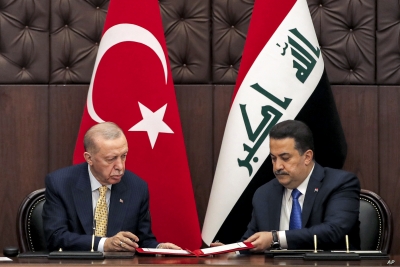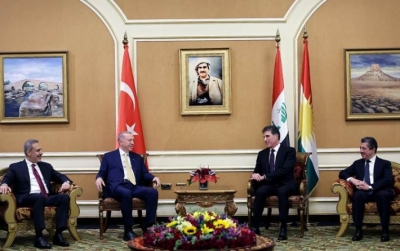
In recent days news coming from European countries regarding sanctions against women wearing head covers or chadors have again become more frequent. In recent months first Egyptian Merve Shirbini in Germany and then Turkish Arzu Çakmakçi in Holland were killed due to hostility against women with head covers. Debate continues in France and Denmark regarding the prevention of women from walking around in burqas. Finally, this debate taking place in Egypt appears to strengthen the mentality of forbiddenness to Muslim societies.
Also in Austria there was an attempt to burn a student's head cover by her schoolmates... At first reading, a person thinks this kind of news is invented. What kind of feelings of hatred these students who are children must have in order to want to turn a sign of identity into ashes together with its owner.
I think that at least one of the components of this hatred is a claim to a different kind of residence the covered person makes others feel. This kind of style of taking on a new country strains the identity acceptance of an original European. Does an immigrant woman also bring her country (in addition to her tendency to give birth to many children)... Does a European woman, for example, counter to her German roots, want to emigrate to other lands when she covers her hair...?
New Muslim generations in Europe exist with the claim of living as a European. They reinvent in a manner that is compatible to their essence the symbols carried by their parents in a haphazard, makeshift way. Moreover, at every opportunity they speak their desire to settle there, not turn back.
The migrations experienced after the past centuries of Western domination in their lands confused the borders Muslim societies were accustomed to. While going after their daily bread which they had lost, they forced the conventionally accepted borders and laws to change.
As far as I know, history has not previously experienced such a migration. Perhaps the immigrant workers are making their ungrateful employers pay the price for the sweat of their brows for dirty work in this way: They strain the definition of actual citizenship and make rules about borders debatable. Immigrants' ignorance about border rules and their vagueness broadens their horizons and clarifies their views. For this reason, from time to time the border expands with the search for new definitions. Walls are rising, on the one hand, to contain immigrants who are forced to make long leaps and, at the same time, well-worn walls crumble down in the name of constructing borders with a greater obstruction capacity.
Going beyond the borders of existence that have been drawn for her, the Muslim woman in Europe is trying to exist within new borders with her head cover. She is straining accustomed travel conditions and hitting the road not just to earn a living or because of marriage, but to continue her education, as well. She is challenging borders that force her to silence –wherever they are. It is as if her stance is determining new borders; for this reason, her head cover is turning a border of fire-starting into a field of identity burning. A centuries-old heritage of opposition and prejudice abandons even the limited 'Enlightenment' tolerance at the borders of the head cover.
Covered women create a discourse with their presence, and they put forth a claim directed towards a different existence. Because they are obvious in their environments, they are confronted by various accusations and pressure first. For almost one-hundred and fifty years the head cover or veil has been a symbol of tension and conflict between the West and East, modernity and traditionalism, and Islam and the modern world; for this reason, it has been subjected to being defined and redefined as an issue that is difficult in proportion to the irreconcilability of the afore-mentioned dichotomies. While debates related to Islam are being advanced via veiled women, they are almost always chosen as the first target during periods of crisis.
After the Twin Towers event the first target attacked in America was veiled women.
The solution shown to veiled women to protect themselves is to forego their appearance or imprison their existence in a ghetto. Discourses formed within the framework of "Unity in diversity" demands a diversity that is only acceptable on the level of folkloric indicators. This demand generally expects Muslim women to be affected in this way: They should forego their own identities and appearance or live in a way that they will not be seen. Otherwise they have to accept to wear a "shirt of fire" physically.
Undoubtedly the price paid as a result of this oppression is much greater than what I have stated here with a few sentences.
In the past just as in wars, borders were burned to prevent crowded immigrations. The veil must be perceived as an inverse Holy Crusade flag that help is hoped for from fire. It is not one square meter of cloth that is hoped to be turned into ashes by the fire, but it must be the perception of a country or homeland that can be carried everywhere.
The head cover is gaining a new meaning similar to a language turning into a homeland and wherever she may be, the covered person is granted at least an area of residence as big as a prayer mat









